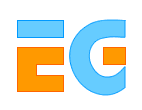T2Real time Interactive Massive Model Visualization
- Organizer
- Philipp Slusallek, Saarland University
David Kasik, The Boeing Company
- Speakers
- David Kasik, The Boeing Company
Sung-eui Yoon, Lawrence Livermore National Labs
Abe Stephens, Scientific Computing and Imaging Institute University of Utah
Beat Bruderlin, Professor of Computer Science, Technical University of Ilmenau (Germany)
Philipp Slusallek, Saarland University (Germany)
Enrico Gobbetti, CRS4 (Italy)
Wagner Correa, IBM
Inigo Quilez, VRContext (Belgium)
Andreas Dietrich
- Abstract
- Real-time interaction with complex models has always challenged interactive computer
graphics. Such models can easily contain gigabytes of data. This tutorial covers
state-of-the-art techniques that remove current memory and performance constraints.
This allows a fundamental change in visualization systems: users can interact with
huge models in real time.
- Summary
- The amount of data produced by todays engineering design and scientific analysis
applications often exceeds the capability of conventional interactive computer graphics.
Users produce tens of gigabytes of data while designing a product or analyzing results.
Techniques for examining all this data simultaneously and interactively are not readily
available in todays visualization or CAD tools.
Combining specific algorithms, specialized data structures, and high performance
hardware has enabled real-time visualization and is a significant research area. As a
result, users can see an entire airplane instead of a subsection or full level-of-detail of a
building instead of a simplified form.
This tutorial presents seven different solutions to the problem. Each instructor will focus
on the practical aspects of their implementation and provide examples, either as movies
or live demos. The tutorial will provide participants with the knowledge to identify tradeoffs
and weigh benefits. In addition, we discuss system implementation issues, the
conceptual basis for the work, the impact on the user community, how to accelerate user
acceptance of the technology, and methods to increase the amount of test data for the
research community.
Key technical topics include: software techniques to overcome performance and memory
size limitations (e.g., kd-trees, occlusion culling, multi-threaded programming, parallel
processor transaction management, memory-mapped files, display lists, cache coherent
layouts); computing architecture (e.g., parallel processor architectures, single and multi-
GPU hardware, thin client access to rendering services, hardware occlusion culling, cell
computers, multi-core CPUs); and overall system architecture (e.g., preprocessing, large
user communities, model configuration management, network transfer of basic
geometry).
The instructors come from academia, start-up companies, and industry. Each has built an
approach that combines one or more of the above technologies. The tutorial will be
organized around the instructors technical approach, what parts have worked, and
lessons learned when applying these technologies to real-world problems.
- Speakers' Background
-
- Dave Kasik
- Dave Kasik is the Boeing Enterprise Visualization Architect. His research
interests include innovative combinations of basic 3D graphics and user interface
technologies and increasing awareness of the impact of visualization technology
inside and outside Boeing. Dave has a BA in Quantitative Studies from the Johns
Hopkins University and an MS in Computer Science from the University of
Colorado. He is a member of IEEE, ACM, ACM SIGGRAPH (he has attended all
SIGGRAPH conferences), and ACM SIGCHI. He is a member of the editorial
board for IEEE Computer Graphics and Applications.
- Dinesh Manocha
- Dinesh Manocha is currently a professor of Computer Science at the University of
North Carolina at Chapel Hill. He was selected as an Alfred P. Sloan Research
Fellow. He received NSF Career Award in 1995, Office of Naval Research
Young Investigator Award in 1996, Honda Research Initiation Award in 1997,
and the Hettleman Prize for scholarly achievement at UNC Chapel Hill in 1998.
He has also received best paper and panel awards at ACM SuperComputing,
ACM Multimedia, ACM Solid Modeling, Pacific Graphics, IEEE VR, IEEE
Visualization, and Eurographics. He has served on the program committees and
editorial boards of leading conferences in computer graphics and geometric
modeling.
Manocha has been working on large model visualization for more than 10 years.
His research group at UNC Chapel Hill has published numerous papers on model
simplification, visibility computations, large data management and integrating
these techniques at ACM SIGGRAPH and other conferences. He has also
organized SIGGRAPH courses on interactive walkthroughs, large model
visualization, and GPGPU.
- Abe Stephens
- Abe Stephens is a PhD student at the University of Utah working in the Scientific
Computing and Imaging Institute under the direction of Dr. Steven Parker. His
work focuses on interactive large data visualization using ray tracing. He has
worked closely with Silicon Graphics to improve interactive ray tracing
techniques on their platform. Abe received a BS in Computer Science from
Rensselaer Polytechnic Institute in 2003.
- Beat Bruderlin
- Beat Bruderlin is professor of Computer Science at the Technical University of
Ilmenau, Germany. His work focuses on computer geometry with applications to
computer aided design and engineering visualization. Other interests include new
interaction techniques for 3D design. Beat Bruderlin received his M.S. degree in
Physics from the University of Basel and a PhD in Computer Science from the
Swiss Federal Institute of Technology (ETH) Zurich, Switzerland. He was a
faculty member at the University of Utah, before joining TU Ilmenau. In 2004 he
founded 3Dinteractive GmbH, a spin-off company developing interaction and
rendering software.
- Philipp Slusallek
- Philipp Slusallek is professor for computer graphics and digital media at Saarland
University, Germany. Before joining Saarland University he was visiting assistant
professor at Stanford University. He received a Diploma/MSc in physics from the
University of Tübingen and a Doctor/PhD in computer science from the
University of Erlangen. Philipp has published and taught extensively, including a
SIGGRAPH05 course, about real-time ray tracing.
He is the principal investigator for the OpenRT project, which aims at
establishing real-time ray-tracing as an alternative technology for interactive and
photorealistic 3D graphics. This work includes the development of a highly
optimized ray tracing software, custom hardware for ray tracing, approaches to
massive model visualization, and real-time lighting simulation algorithms.
Recently he co-founded "inTrace", a spin-off company that commercializes realtime
ray tracing technology.
- Enrico Gobbetti
- Enrico Gobbetti is the founder and director of the Visual Computing (ViC) group
at the Center for Advanced Studies, Research, and Development in Sardinia
(CRS4). At CRS4, Enrico developed and managed a graphics research program
supported through industrial and government grants. His research interests span
many areas of computer graphics. His most recent contributions include a new
breed of coarse-grained adaptive multiresolution techniques for processing and
rendering large scale geometric models. Enrico holds an Engineering degree
(1989) and a Ph.D. degree (1993) in Computer Science from the Swiss Federal
Institute of Technology in Lausanne (EPFL). For more information, see
www.crs4.it/vic
- Wagner Correa
- Wagner Correa is a Research Staff Member with the IBM Watson Research
Center. He is part of the Visualization Systems Group, which recently released the
Deep Computing Visualization (DCV) suite of programs for immersive and
remote visualization. Prior to joining IBM, Wagner was teaching Computer
Graphics at the Federal University of Minas Gerais (UFMG) in Brazil. Wagner
holds a B.S. degree (1994) and an M.S. degree (1996) in Computer Science from
UFMG, and an M.A. degree (1998) and a Ph.D. degree (2004) in Computer
Science from Princeton University.
- Inigo Quilez
- Inigo Quilez received a degree as a Telecommunications Engineer from the
University of Basque Country (Spain), with intensification in digital signal
processing. He has extensively worked in real-time computer graphics, within the
"demoscene" since 1998, especially in the subject of extreme procedural content
creation and data compression. Well known in the fractals community, work is
still needed to give aesthetics a more important role in the scientific work.
Since he joined VRcontext in 2003, his work focuses on research and
development of photorealistic rendering and massive model visualization
techniques among others, focusing in shared memory multi-cpu and multipipe
systems (especially the Silicon Graphics architecture).
- Andreas Dietrich
- Andreas Dietrich is a research assistant and final-year PhD student at
the Computer Graphics Group at Saarland University. He is working on
real-time ray tracing for VR applications, natural phenomena
rendering, and on interactive massive model visualization. Andreas
received a masters degree (Dipl.-Technoinform.) in computer science
from Kaiserslautern University in 2001.
If you have any comments regarding this webpage please send a message to the webmaster.























